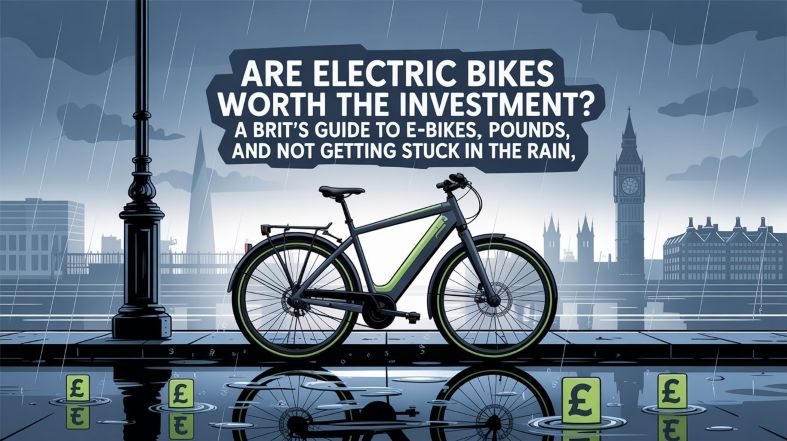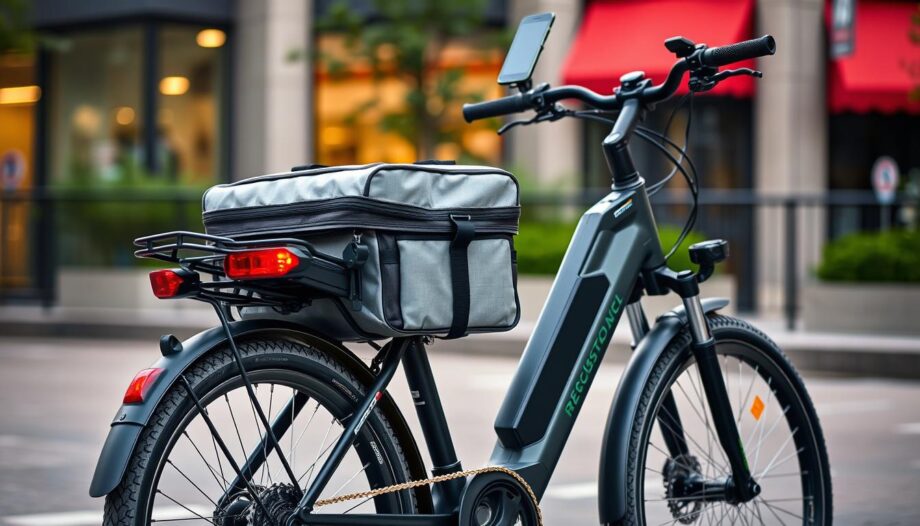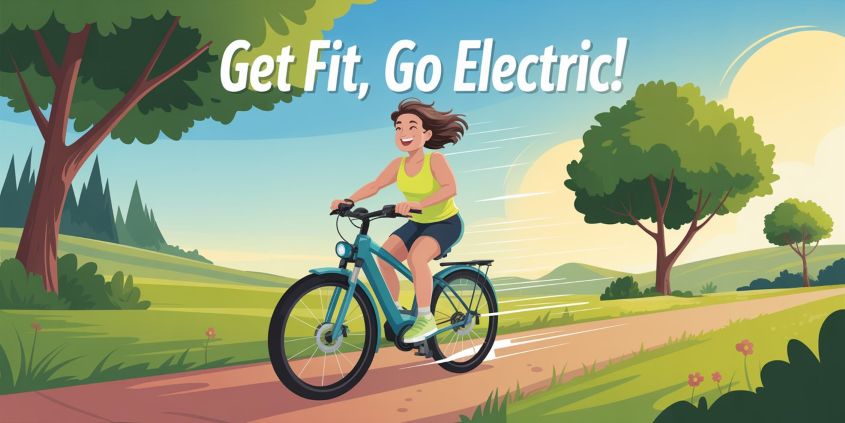Have you ever felt like traditional workouts just aren’t showing the results you hoped for? Are you looking for a new method that blends fun with fitness? E-biking might be your answer. We all want our efforts to pay off, but sometimes we need a change of pace literally. With e-bikes, you can explore farther and tackle varied terrains without feeling drained, helping you maintain a more consistent exercise routine. Additionally, many e-bikers enjoy the freedom of cycling paths, which can make their rides safer and more enjoyable. Just make sure to always wear a helmet to protect yourself while you explore new routes.
Research backs this up. Regular e-bikers enjoy improved cardiovascular health and lower body fat percentages compared to non-cyclists. Even better, pedal-assist features make it easy to tailor your workout intensity to match your fitness level. We’ve put in extensive effort gathering these insights because we know how vital reliable information is when considering something new. Though you may have concerns about its effectiveness for weight loss, the evidence speaks volumes about its potential. Now, let’s dive into how Reight Good Bikes and e-biking can enhance your fitness journey, and remember that wearing a helmet is crucial for safety on your adventures.
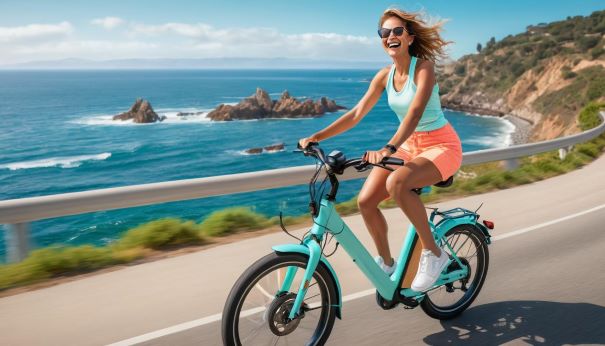
E-biking can assist in weight loss by providing low-impact aerobic exercise that can increase calorie burn. Additionally, e-biking may encourage individuals to take longer rides and explore new terrain, thereby increasing overall physical activity and potentially contributing to weight loss over time. Cycling paths often offer scenic and less congested routes that can make your rides even more enjoyable.
Calories Burned, Distance Covered, and Weight Loss Potential on an E-Bike
| Cycling Intensity | Assistance Level | Calories Burned (per hour) | Weight Loss (per week) | Distance Covered (per hour) |
|---|---|---|---|---|
| Low | High | 200 | 0.23 lbs | 12 miles |
| Low | Medium | 250 | 0.29 lbs | 10 miles |
| Low | Low | 300 | 0.35 lbs | 8 miles |
| Moderate | High | 300 | 0.35 lbs | 16 miles |
| Moderate | Medium | 400 | 0.47 lbs | 14 miles |
| Moderate | Low | 500 | 0.59 lbs | 12 miles |
| High | High | 400 | 0.47 lbs | 20 miles |
| High | Medium | 500 | 0.59 lbs | 18 miles |
| High | Low | 600 | 0.71 lbs | 16 miles |
Notes:
- Cycling Intensity: Refers to the effort level of the cyclist (e.g., low, moderate, high).
- Assistance Level: Refers to the level of electric assistance provided by the e-bike (e.g., high, medium, low).
- Calories Burned: The approximate number of calories burned per hour based on the intensity and assistance level.
- Distance Covered: The estimated distance covered per hour is based on the cycling intensity and assistance level.
- Weight Loss Potential: The estimated weight loss per week assuming one hour of cycling per day for seven days.
How This Data Helps:
- Setting Realistic Goals: Understand how much distance you can cover and calories you can burn at different intensity levels.
- Tracking Progress: Use this data to set weekly or monthly targets for distance and weight loss.
- Balanced Approach: Combine the right level of assistance and cycling intensity to achieve your fitness goals effectively.
Example Calculation:
If you cycle at a moderate intensity with medium assistance for 1 hour each day, you can:
- Burn approximately 400 calories per hour.
- Cover around 14 miles (22 km) per hour.
- Potentially lose around 0.47 lbs (0.21 kg) per week.
References:
- Calorie burn and distance estimates are based on general fitness data and typical e-bike performance metrics.
- These estimates may vary depending on individual factors such as weight, age, fitness level, and the specific e-bike model used.
Intensity and Distance Tips
For instance, starting with shorter rides of 20-30 minutes at a moderate intensity is a good way to ease into e-biking. This gives your body time to adjust and build stamina. As you progress, gradually increase both the duration and difficulty of your rides. Mixing up your rides with flat terrain and hills can challenge different muscle groups and improve your overall stamina.
Aim for at least one long ride (60-90 minutes) each week. These longer rides are great for building endurance and burning calories. Additionally, incorporate shorter but more intense rides throughout the week to maintain variety and keep things interesting.
It’s important to remember that speed doesn’t determine the effectiveness of an e-bike workout. Rather than focusing solely on going faster, pay attention to the resistance levels, inclines, and challenging terrain, which have a significant impact on the overall intensity of your ride.
By progressively challenging yourself with a mix of intensities and distances, you’ll not only keep things interesting but also ensure that you’re consistently working toward your weight loss and fitness objectives.
Moving forward into the next section, we’ll explore specific e-bike workouts that are tailored to achieve various fitness goals while making the most out of both your electric bike and the outdoor experience.
When it comes to e-bike workouts, it’s important to consider a mix of structured routines that focus on both interval training and steady rides. Combining these two types of workouts can lead to significant fitness gains and weight-loss benefits.
One effective way to structure your e-bike workout is by incorporating interval training. For example, you can begin with 5 minutes of moderate cycling, followed by 1 minute of high-intensity sprinting. Repeat this cycle for 30–45 minutes to get a comprehensive workout that challenges your body and helps improve your cardiovascular health. This type of workout not only burns calories but also helps in building endurance and boosting your metabolism, ultimately leading to better weight management.
In addition to interval training, steady-state rides play a crucial role in an e-cycling fitness programme. These rides involve maintaining a consistent pace for a longer duration, typically 45–60 minutes. While they may not have the same intensity as interval training, steady-state rides are valuable for enhancing overall endurance and strengthening your cardiovascular system. They also contribute to efficient calorie burning and can be particularly beneficial for individuals looking to improve their aerobic capacity.
Tracking Your Progress
As we embark on our fitness journey, it’s crucial to monitor our progress. We all need that extra push to keep going, and seeing tangible results is a fantastic way to stay motivated. Tracking your e-bike workouts can be a game-changer. It doesn’t have to be overly complicated; simple tools and practices can make a world of difference.
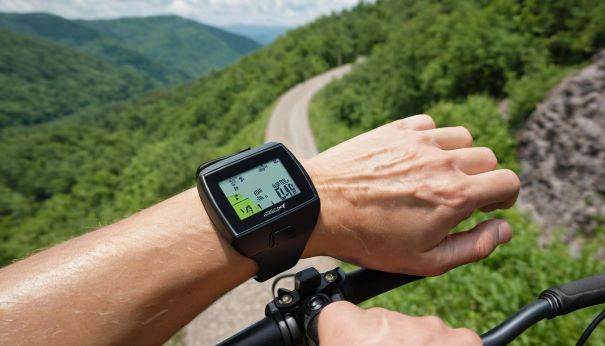
One of the easiest ways to track your progress is by using fitness apps and wearable devices specially designed for cyclists, get yourself a cheat fitness watch if you are on a limited budget. These will enable you to log various metrics such as distance covered, speed, heart rate, and calories burned during each ride. With this data at your fingertips, you can easily identify patterns and set achievable goals based on your performance. Furthermore, these devices can provide real-time feedback during your rides, helping you adjust your pace or effort level to optimise your workouts.
Moreover, utilising built-in tracking systems on e-bikes is increasingly common. These systems sync seamlessly with your smartphone, allowing easy access to your workout data. This accessibility encourages regular review and analysis of your stats, fostering an understanding of strengths and areas for improvement. By keeping a weekly log of your rides that includes all these metrics, you’ll gain insights into your progress over time, enabling you to make necessary adjustments in pursuit of continuous improvement.
Let’s say you notice that your average speed has been increasing steadily over the past few weeks while maintaining a consistent heart rate. This indicates improved cardiovascular endurance and overall fitness. With this knowledge, you can consider setting more ambitious speed or distance goals for the upcoming weeks.
Is there a certain intensity or duration of e-bike required to shed pounds effectively?
Yes, there is a certain intensity and duration of e-biking required to effectively shed pounds. To achieve weight loss, it is recommended to engage in moderate to vigorous intensity exercise for at least 150 minutes per week. According to a study published in the Journal of Sports Medicine and Physical Fitness, e-bike riders can burn an average of 300-500 calories per hour when riding at a moderate intensity. Therefore, incorporating regular e-biking sessions with sufficient intensity and duration can contribute to shedding pounds and improving fitness.
How does electric biking compare to traditional biking when it comes to losing weight?
E-biking can be just as effective for weight loss as traditional biking, if not more. While it may require less physical effort due to the assistance of an electric motor, e-biking still provides an excellent cardiovascular workout. According to a study published in the International Journal of Environmental Research and Public Health, e-bikers burn nearly as many calories per hour as traditional cyclists. Additionally, e-biking can be more accessible and enjoyable for beginners or individuals with limited mobility, helping them stay consistent with their exercise routines. So, whether you choose traditional biking or e-biking, both options can contribute to weight loss and improved fitness.
Can e-biking be combined with other activities or exercises to enhance weight-loss results?
Yes, e-biking can be combined with other activities and exercises to enhance weight loss results. For example, incorporating strength training exercises such as lunges or push-ups during rest stops can increase muscle tone and caloric burn. Additionally, alternating e-biking with high-intensity interval training (HIIT) sessions can boost metabolism and accelerate weight loss. Research has shown that HIIT workouts can improve cardiovascular fitness and burn more calories in a shorter amount of time compared to steady-state exercises.
Are there any specific tips or strategies for maximising losing the pounds while e biking?
Yes, there are specific tips and strategies for maximising weight loss while e-biking. Firstly, interval training on an e-bike can be highly effective in burning calories and increasing metabolism. By alternating between high-intensity bursts and recovery periods, you can maximise fat burn. Secondly, incorporating uphill rides into your route can engage more muscle groups, resulting in higher calorie expenditure. Lastly, monitoring your heart rate during e-bike workouts and aiming for the fat-burning zone (around 70% of maximum heart rate) can optimise weight loss. According to a study published in Medicine & Science in Sports & Exercise, e-biking at a moderate intensity for just 30 minutes can burn approximately 350-500 calories depending on factors such as weight and speed.
